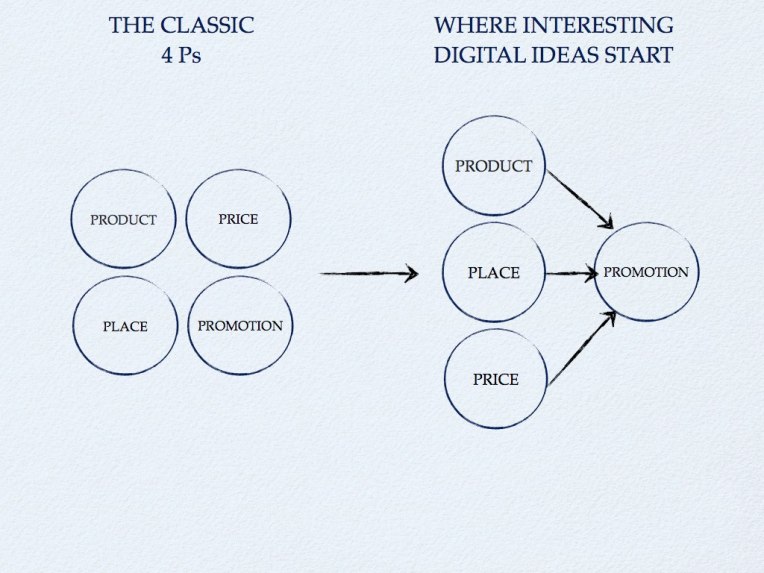Marketing is probably one of the most devalued and derided words of our time. So much so that it’s seldom seen in the blogosphere without some kind of expletive attached. Ranting aside, you’ll consistently see some of the best and most interesting thinkers in the digital space declaring that they aren’t interested in, or “don’t do” marketing.
It’s a statement that shows the steady devaluation of a term that once meant much more.
Once upon a time, marketing was about the fabled “4 Ps”: Product, Price, Place and Promotion. People have introduced new “Ps” as time has gone on-people, processes, pleasure to name a few but the original four are a good place to start. Marketing was the science of assessing a marketplace and understanding which combination of these levers could most compellingly drive a brand or product forward.
The trouble is that marketing became preoccupied-and defined-by the fourth and perhaps least exciting P-Promotion. One of the most exciting aspects of the digital world is that for by taking the cost and infrastructure implications out of changing product, place and price it gives marketers back the opportunity to influence businesses in a much more profound and exciting way. It’s an opportunity for marketers to transform businesses and for businesses to experiment again with genuinely radical thinking.
With that in mind, it’s truly extraordinary that anyone still thinks the most interesting use of digital is as another place to put promotional messages. And it’s no coincidence that the most exciting digital initiatives are coming from smart people thinking about how they can change product, price and place then use promotion to, as the always excellent John Willshire puts it, tell the stories of the things they’ve done.

